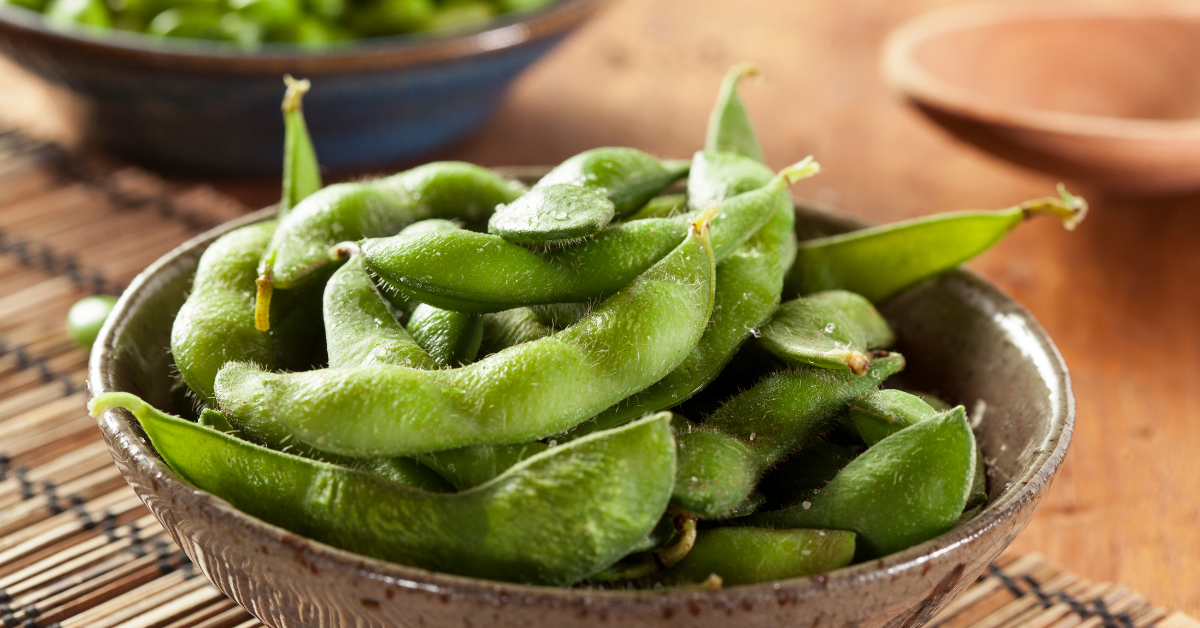Edamame, once a simple summer snack in Japan, has now become a global symbol of health and wellness. From high-end restaurants in Paris to supermarkets in New York, edamame is winning over people’s hearts with its nutritional balance and natural simplicity. Its worldwide popularity reflects not only changing dietary trends but also a growing appreciation for Japanese culture and mindful eating.
What Is Edamame
Basic Information and Characteristics
Edamame refers to young soybeans harvested before maturity, usually boiled in salted water. The bright green beans inside the pod have a subtle sweetness and nutty aroma, making them a summer favorite in Japan. They pair perfectly with cold drinks and are considered an essential part of casual gatherings and meals.
Rich in plant-based protein, vitamins, and dietary fiber, edamame is a balanced and healthful food. It serves as an excellent protein source for those who avoid meat or pursue a healthier diet.
Nutritional Value and Health Benefits of Edamame
Edamame is packed with nutrients beneficial to the body. The following table summarizes its main components and effects:
| Component | Main Benefit |
|---|---|
| Protein | Supports healthy muscles and skin |
| Vitamin B1 | Aids in recovery from fatigue |
| Dietary Fiber | Improves digestive health |
| Isoflavones | Helps maintain hormonal balance |
| Iron | Prevents anemia |
In addition, edamame contains lecithin, which lowers cholesterol, and vitamin C, which provides antioxidant benefits. Despite being low in calories, it is highly satisfying, making it a popular choice even during diets.
The History and Cultural Significance of Edamame in Japan
Origins and Cultural Connection
Edamame has a long history in Japan, dating back to the Nara period (8th century). The name “edamame,” which literally means “beans on branches,” comes from the way they were sold attached to their stems. During the Edo period, they became a common street food and household snack, especially in the summer.
| Era | Role of Edamame |
|---|---|
| Nara Period | Consumed as immature soybeans |
| Edo Period | Popular summer snack sold at food stalls |
| Modern Day | Staple appetizer in izakaya and at home |
In Edo, people would enjoy edamame while relaxing in the evening breeze — a custom that later evolved into today’s “beer and edamame” culture.
Edamame at the Japanese Table
In Japan, edamame is a symbol of seasonal enjoyment. Chilled boiled edamame is a standard item at family meals and summer festivals. It pairs well with drinks and helps cool down the body in hot weather.
Since edamame is the young form of soybeans — the foundation of miso, tofu, and natto — eating it is, in a sense, experiencing the roots of Japanese food culture.
| Usage | Description |
|---|---|
| Home Cooking | Boiled with salt, added to salads or rice dishes |
| Izakaya | Served as the first appetizer with drinks |
| Festivals | Enjoyed at summer events and celebrations |
Edamame Around the World
Global Popularity and Spread
Since the 2000s, edamame has become widely known overseas under the same name, “edamame.” With the rise of health-conscious eating and vegan culture, it is now recognized as a “high-protein, low-fat Japanese superfood.” It is available frozen in supermarkets and served in restaurants as appetizers or salad toppings.
| Region | Common Ways to Eat Edamame |
|---|---|
| United States | Salted and served as a snack or salad topping |
| France | Seasoned with olive oil and sea salt as a starter |
| Asian Countries | Stir-fried with soy sauce or garlic |
Why Foreigners Love Edamame
To foreigners, edamame represents simple yet healthy Japanese cuisine. The act of splitting the pod by hand to eat the beans feels interactive and fun. Its light, clean flavor makes it a “guilt-free snack” popular in bars, restaurants, and even movie theaters.
How to Enjoy Edamame
How to Boil Edamame at Home
To prepare delicious edamame, proper washing and salting are essential.
| Step | Description |
|---|---|
| 1 | Rinse the pods thoroughly and trim the ends slightly |
| 2 | Sprinkle with salt and gently rub to remove fuzz |
| 3 | Boil in salted water for 3–5 minutes |
| 4 | Drain and cool briefly in cold water, then sprinkle with salt again |
Do not overboil — this is the key to achieving bright color and fresh aroma. Edamame can be enjoyed warm or chilled.
Creative Recipes and Variations
Edamame is highly versatile and can be used in many dishes beyond the traditional salted version. Popular options include garlic edamame, stir-fried with olive oil and garlic, and edamame dip, blended with lemon juice for a refreshing spread. Adding edamame to fried rice, soups, or pasta not only enhances color but also boosts nutrition.
| Recipe | Description |
|---|---|
| Edamame Dip | Mashed edamame mixed with lemon for a healthy spread |
| Garlic Edamame | Stir-fried in olive oil and garlic for bold flavor |
| Edamame Soup | Blended into a creamy, mild-tasting soup |
The possibilities are endless — edamame can fit effortlessly into both Japanese and international cuisine.
Conclusion
Edamame is a true symbol of Japanese summer and a globally celebrated traditional food. Its worldwide recognition under the same name reflects the respect Japan’s culinary culture has earned. Nutritious, delicious, and versatile, edamame continues to bring smiles and health to people across the world.
To enjoy edamame is not merely to eat — it is to experience the spirit, seasons, and heart of Japan. As its popularity grows, edamame will continue to act as a cultural bridge, connecting Japan and the world through the universal language of good food.






